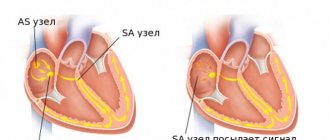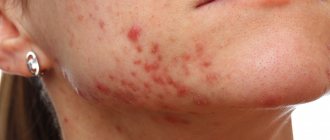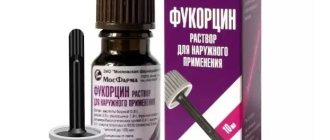Ceftriaxone
A semi-synthetic antibiotic of the third generation, cephalosporin, is distinguished by the breadth of its antibacterial “outlook”. Its bactericidal effect is associated with inhibition of cell wall synthesis. This antibiotic is distinguished by persistent resistance to the action of beta-lactamases, secreted by evolutionarily “advanced” bacteria to protect against pharmacological “attack”. The list of “blood enemies” of cephalosporin, as already mentioned, is quite extensive: these are gram-negative aerobes Enterobacter cloacae, Enterobacter aerogenes, Haemophilus influenzae, Escherichia coli, Klebssiella spp. (including Klebssiella pneumoniae), Haemophilus parainfluenzae, Neisseria gonorrhoeae (including penicillin-forming strains), Neisseria meningitidis, Proteus vulgaris, Proteus mirabilis, Citrobacter diversus, Citrobacter freundii, Serratia marcescens, Morganella morganii, Salmonella spp., Shigella spp., Providencia spp., Acinetobacter calcoaceticus, some strains of Pseudomonas aeruginosa. The value of ceftriaxone lies in the fact that even the most “seasoned” of the above microorganisms, which are resistant to other cephalosporins, penicillins, and aminoglycosides, react to it. Among gram-positive aerobes, cephalosporin “sows death” among Staphylococcus aureus, Staphylococcus epidermidis, Streptococcus pyogenes, Streptococcus agalactiae, Streptococcus pneumoniae. Anaerobes do not stand aside either: Clostridium spp. and Bacteroides spp.
Ceftriaxone is available in powder form for the preparation of a solution for intravenous and intramuscular administration.
For adults and children over 12 years of age, ceftriaxone is administered 1-2 g once a day. For severe infections, the upper dose limit can be raised to 4 g. Ceftriaxone is also used in pediatric practice. To calculate the dose, body weight parameters are used: 20-50 mg per 1 kg (for newborns), 20-80 mg per 1 kg (children under 12 years old) with the same frequency of administration as in adults. For moderately well-fed (with a body weight of more than 50 kg) younger patients, the dose of the drug is similar to the dose for an adult. The same is true for elderly patients. The duration of use of ceftriaxone in the treatment process is tied to the nature of the disease. Even if body temperature has returned to normal and eradication of pathogens is confirmed, administration of the drug should continue for another 2-3 days.
Long-term treatment with ceftriaxone involves regular monitoring of peripheral blood patterns, as well as functional parameters of the liver and kidneys. The drug is not compatible with alcohol: this combination is fraught with the development of undesirable effects such as headaches, abdominal cramps, nausea, vomiting, decreased blood pressure, increased heart rate, and shortness of breath. The storage conditions for the prepared solution differ significantly from the original dosage form: in the refrigerator at a temperature range from 2 to 8 ° C. Shelf life - no more than a day.
Causes of inflammation of the trigeminal nerve on the face
Usually the disease is caused by infection or bacteria. List of reasons why inflammation of the facial nerve may occur:
- Temporomandibular joint injuries
- Tumors (benign and malignant) of the brain and facial area
- Anomalies of skull development
- Skull injuries - birth, fracture, base, damage to the face or jaw
- Polio
- Pulmonary tuberculosis
- Otitis
- Sinusitis
- Chronic caries
- Inflammation after tooth extraction or treatment
- Hypertension
- HIV and AIDS
- Poisoning
- Inflammation of the middle ear
- Severe hypothermia of the head
- Changes in hormonal levels in women
- Gum inflammation
- Ramsay Hunt syndrome
- Stroke
- Bell's palsy
Causes range from minor to life-threatening illnesses. Each of the reasons determines the further treatment of the patient. In some cases, special tests are performed for diagnosis - auditory, lacrimal, infectious, salivary or gustatory. In this way, the functioning of the receptors and sensory organs is checked.
Composition and release form
Ceftriaxone is available in two dosage forms:
- powder for the preparation of a solution for intravenous or intramuscular injections with a concentration of the active substance of 0.5 or 1 g;
- powder for the preparation of a solution intended for IVs in hospitals, concentration of the main active ingredient is 2g.
White or slightly yellowish powder in the form of crystals is packaged in 10 ml ampoules. Sold in 1 or 10 pieces per box, complete with instructions for use.
The main substance is ceftriaxone disodium salt. It is not possible to buy Ceftriaxone syrup or tablets, since the drug is not available in such forms.
Indications for use
Ceftriaxone is prescribed when an infection caused by microorganisms susceptible to it is detected.
The main diseases for which a doctor can prescribe medicine:
- severe lower respiratory tract infections (inflammation or abscess of the lungs, bronchitis, pleurisy);
- infections of the ENT organs (sore throat and sinusitis in adults);
- infections of the urinary system (cystitis, pyelonephritis, prostatitis, pyelitis);
- infectious lesions of bones, joints, soft tissues;
- peritonitis and other infections of the abdominal organs;
- salmonellosis;
- syphilis (with intolerance to penicillins and in advanced cases);
- uncomplicated gonorrhea;
- bacterial meningitis;
- typhoid fever;
- blood poisoning;
- Lyme disease;
- burns and wounds infected with infection;
- inflammation of the inner lining of the heart.
Diagnosis of the disease
A diagnostic search for chronic tonsillitis is not only making a diagnosis, but also determining the form of the disease. Therefore, the examination is always comprehensive, which includes:
- Objective examination data (redness, swelling, injection of blood vessels on the tonsil mucosa, etc.);
- Survey – assessment of complaints, the history of their occurrence and other anamnestic information;
- Microbiological examination (seeding pathological secretions taken from lacunae on special media to determine the causative microbe, as well as its sensitivity to antimicrobial drugs);
- Laboratory tests (blood, urine);
- Instrumental examinations (ECG, ultrasound of the heart and lymph nodes).
Assessment of these parameters allows you to correctly determine the stage of the inflammatory process and optimally select treatment.
| Examination method | Signs | What does the examination give? |
| Collection of anamnesis and complaints | Pain and discomfort in the throat, sensation of a lump or foreign body, heart and joint pain, general weakness, malaise. Single or multiple exacerbations of tonsillitis throughout the year. | Allows you to suspect chronic tonsillitis and the stage of the process, and evaluate the effectiveness of the treatment. |
| Pharyngoscopy | Pus or purulent plugs on the surface of the tonsils (pathological secretion fills the lacunae). Redness, infiltration and swelling of the arches of the palate, their cicatricial fusion with the tonsil. | Confirms the diagnosis of chronic tonsillitis, but does not allow assessing the stage of the process. Allows you to evaluate the effectiveness of conservative treatment. |
| Bacteriological examination | Identification of the microorganism and its sensitivity to antibacterial therapy. | Allows you to identify the causative microorganism and select the necessary treatment. Assess the effectiveness of conservative treatment. |
| Laboratory diagnostics | Clinical blood test, biochemical blood test (urea, creatinine, ALT, AST), C-reactive protein, ASLO, rheumatoid factor, IgE, total blood IgA. | Allows you to determine the activity of inflammation, identify the risk of development or the presence of concomitant diseases (rheumatism, glomerulonephritis, polyarthritis, infective endocarditis, etc.) Helps choose treatment tactics, evaluate the effectiveness of treatment. |
| Functional diagnostics | ECG (electrocardiogram) Echo-CG (ultrasound of the heart) Ultrasound of the kidneys Ultrasound of the lymph nodes of the neck. | Helps determine the stage of chronic tonsillitis, identify the presence of associated diseases (rheumatism, glomerulonephritis, polyarthritis, infective endocarditis, etc.) Helps choose treatment tactics. |
What is the role of the palatine tonsils?
Tonsils are organs consisting of lymphoid tissue that are located in the nasopharynx and perform the function of immune defense. They got their name because of their external resemblance to an almond, which is why anatomists began to use the name “almond.”
Lymphoid tissue in the pharynx is present not only in the palatine tonsil, but also in other structures:
- lingual and nasopharyngeal tonsil;
- lymphoid foci of the posterior pharyngeal wall.
The lymphoid tissue of the pharynx is an important part of the immune system, since on its surface contact of the body’s immune cells with the environment occurs. The information received by the immune cells in the lymphoid structures of the pharynx is transmitted to the next level of immune organs (thymus, bone marrow, lymph nodes) for the production of protective proteins (immunoglobulins). Subsequently, they neutralize pathogenic viruses, bacteria, fungi and protozoa that enter the body from the external environment.
With age, the role of the tonsils as immune organs is gradually lost. Lymphoid tissue is gradually replaced by connective tissue elements, so involution (reverse development) of organs begins. The nasopharyngeal tonsil is the first to undergo involution, later it spreads to the lingual and palatine tonsils. Therefore, in the elderly, the tonsillar tissue (tonsil) decreases to the size of a pea.
The palatine tonsil is the most complex in structure. It consists of a large number of channels - crypts (or lacunae). Some crypts look like a shallow, more or less straight tubule, others have greater depth, branch like a tree, and some crypts are interconnected. Often, where the crypt opens into the pharynx, there is a narrowing of the canal. This makes it difficult to clear it of its contents, against the background of which an inflammatory process develops.
The palatine tonsil is bounded by a capsule - a dense connective tissue membrane. Outside of it there is a layer of loose tissue - paratonsillar or peritonsillar tissue. With severe inflammation, the infection destroys the barrier of the capsule and goes beyond it, causing inflammation of this fiber. This condition is called paratonsillitis. It refers to a serious complication, which, if treated incorrectly or untimely, can have serious consequences, such as the development of a purulent focus in the soft tissues of the neck (peritonsillar abscess, phlegmon of the neck), sepsis, and damage to internal organs. Therefore, it is necessary to start treatment as early as possible.
What helps with ceftriaxone injections, indications and contraindications
The drug is presented as a yellowish or white fine-crystalline powder. The composition includes ceftriaxone, which belongs to the class of cephalosporins. The medicine is used for injections and infusion therapy; the bottle contains 0.25, 0.5, 1 and 2 g of the active ingredient. The medication is considered a universal antibacterial agent, active against gram-positive and gram-negative microorganisms.
The instructions indicate the following indications for the use of Ceftriaxone:
- inflammation of the peritoneum, angiocholitis, accumulation of pus in the cavity of the gallbladder;
- respiratory diseases - bronchitis, abscess, pneumonia, purulent pleurisy;
- lesions of bone, joint, soft tissues and dermis, genitourinary department - with pyelonephritis, pyelitis, cystitis, prostatitis, epididymitis;
- infections of burn and wound surfaces;
- sepsis, bacterial septicemia, meningitis;
- syphilis, chancroid, tick-borne borreliosis;
- salmonellosis, uncomplicated gonorrhea, typhoid fever.
The medicine is used to prevent secondary infections in the postoperative period and to treat people with a weakened immune system.
Ceftriaxone is contraindicated in patients:
- with allergic reactions to the component composition;
- hyperbilirubinemia, prematurity (for newborns);
- liver or kidney failure;
- enteritis, colitis associated with antibacterial therapy.
The medication is not used during pregnancy and breastfeeding.
Mechanism of action of the drug
The pharmacological effect of the drug is determined by the class of Ceftriaxone as an antibiotic.
The substance has an effect on the vital activity of microbes: it inhibits the process of biosynthesis of their membranes and causes the death of pathogenic microflora.
Ceftriaxone has proven effective against a significant number of gram-negative, gram-positive and some anaerobic bacteria, including Staphylococcus aureus, Treponema pallidum.
When an injection is made into a muscle, the drug quickly enters the circulatory system and enters the tissues, organs and biological fluids present in the body. The concentration reaches its maximum 2-3 hours after injection into the buttock, and when infused into a vein, at the end of the procedure.
Contraindications and side effects
Injections and infusions with Ceftriaxone are contraindicated in case of revealed hypersensitivity to cephalosporin antibiotics.
Prescribe with caution if:
the newborn has a high level of bilirubin;
- the patient suffers from renal or liver failure;
- there is enteritis or colitis caused by the use of antibiotics.
- Undesirable effects during therapy may be the following:
- allergic manifestations (swelling, skin rash, itching, chills, fever, anaphylactic shock);
- dizziness, pain in the head;
- decrease in the amount of urine excreted;
- disturbances in the functioning of the digestive system (bloating, diarrhea, nausea and vomiting, dysbacteriosis, candidiasis, enterocolitis);
- malfunctions of the hematopoietic system (leukopenia, thrombocytosis, basophilia, anemia).
When the solution is injected into a vein, pain and inflammation of its wall may occur.
The injection of the medicine into the muscle is accompanied by local pain at the time of the injection.
Causes of development of chronic tonsillitis
The development of chronic tonsillitis is possible according to 2 scenarios:
- as a result of tonsillitis (acute tonsillitis), which was incorrectly treated or the treatment was not completed;
- as a result of decreased immune defense and constant exposure to aggressive factors (this is a non-anginal option).
The following are aggressive stimuli:
- inhalation of tobacco smoke;
- poor nutrition;
- alcohol abuse;
- carious teeth;
- inflammatory processes in the paranasal sinuses (sinusitis, sinusitis, etc.);
- impaired nasal breathing that occurs when the nasal septum is deviated, polyps or hypertrophy of the inferior turbinates. Under such conditions, the oral mucosa dries out and the formation of immunoglobulin A is disrupted, which reduces the immune defense of the ENT organs.
However, exposure to the described factors alone is not enough for the development of chronic tonsillitis. Currently, it is considered the result of infection with pathogenic bacteria against the background of allergization (altered immune reactivity). Local changes in the lymphoid tissue after previous tonsillitis, as well as the factor of heredity, which manifests itself only under certain conditions of the internal and external environment, also have a role in this process.
Infection. The most common causes are streptococci and staphylococci. In this case, the maximum danger is posed by pyogenic streptococcus, which is called beta-hemolytic (belongs to group A). The risks associated with this pathogen are the likelihood of developing autoimmune diseases, i.e. when your own immune cells damage other cells in your body. This happens with glomerulonephritis, rheumatism, polyarthritis and other similar diseases.
Altered reactivity of the body (its allergization), which is characterized by excessive production of class E immunoglobulins. Under such conditions, the re-entry of antigens (for example, foreign bacterial proteins) triggers an allergic reaction that constantly maintains inflammation. This corresponds to the exacerbation phase of the pathological process.
It has been proven that the likelihood of chronic tonsillitis in people whose first- or second-degree relatives suffered from this disease is much higher than in other people. This is due to the peculiarities of the anatomy of the tonsillar crypts and immune status (tendency to an allergic response).







